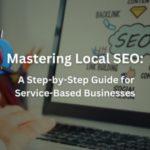
Automating customer journeys for service-based businesses has played an instrumental role in eliminating inefficiencies caused by traditional challenges such as lack of personalization, manual overload, and erroneous data analytics. From inquiry to repeat business, automation leads to more cohesive, more efficient, and personalized customer experiences among other benefits in all areas of customer journey.
Customer journey automation can lower operational costs, improve loyalty and retention, and improve customer satisfaction. Surveys show that it can lower operational costs by up to 40% and improve customer satisfaction levels by more than 25%.
So, what steps can service-based businesses take to automate the customer journey?
Mapping Out the Customer Journey Specific to Service-Based Businesses
When it comes to mapping out the customer journey for your service-based business, it is recommended to break down the process into stages. The different steps involved in the process are as follows:
i. Define the Goals & Create the Target Persona Profile
Consider your company’s goals for customers. What do you want them to accomplish? The answer to this question helps you give direction to your customers’ journeys. It is also important to consider who your ideal customers are.
ii. Consider all Potential Customer Touchpoints

It is recommended to list all the potential customer touchpoints for a more comprehensive mapping process. Try to be as thorough as possible. If you miss out on any touchpoints, you can have an incomplete map.
iii. Identify Both Pain Points & Delight Points
When studying different touchpoints, make sure to check the quality of experience for each one. Identify the points where customers are struggling. Also identify the points where they are succeeding. These should be the points you need to focus the most during the initial stages.
iv. Map the Customer Journey
At this stage, you have all the information needed to build the customer journey map. This map doesn’t follow a single straight line. Different personas can go through different journeys within the same touchpoints and objectives, making things seem complicated.
Identifying Touchpoints Suitable for Automation
If you want to identify and map customer touchpoints, it is important to analyze customer interactions. This can be achieved through the following steps:
i. Consider Your Target Audience
You must know your target audience. It is also important to meet them wherever they are. As your business and technology resources evolve, it may be required to create new touchpoints for customer interaction. Examples include integrating a chatbot on your website and interacting with them on a new social media platform.
ii. Identify Customer Interactions
Address the following questions from the perspective of your customers to identify your customers’ frequent interactions:
- How do they come to the decision where they will make a purchase?
- Where do they get help from when they face problems with a purchase?
- How do they learn about new services?
- Where do they submit feedback for a purchase they liked or didn’t like?
When you have answers to these questions, it helps you learn where your customers are currently interacting with your brand. Thus, you will know where you should engage with them and when to seek their feedback.
iii. Categorize Your Customer Touchpoints
Group your customer touchpoints into the following categories:
- Before purchase
- During purchase
- After purchase
This can help you identify the touchpoints that can work best for your business and the ones that require improvement. You can also categorize touchpoints based on other factors relevant to your business. Examples include in-person or online interactions and brands or services.
Selecting Tools for Automating Communications and Follow-Ups

While there are tons of automation tools in the market, not all are meant for your business. So, it is important to do some research and make comparisons. Choose tools that perfectly integrate with your existing systems. Besides, prefer user-friendly tools that can scale with your business.
Here are some of the most popular tools for automating communication and follow-ups:
Rengage
You can use this tool to manage and improve customer journeys, gain insights, and measure results. It helps speed up your customer journey at every stage including initial inquiry, activation, conversion, and churn.
HubSpot
This tool offers a vast range of resources to help you generate qualified leads. HubSpot helps you gather key info to optimize your marketing efforts. Its features such as kickback emails, lead flows, and forms make it highly popular.
EngageBay
This is a highly versatile platform that provides marketing, CRM, and sales solutions. Its main features include email marketing automation, sales automation tools, and lead nurturing workflows. It can help you streamline your interactions with leads and improve engagement and conversion.
Mailchimp
Mailchimp is designed for ease of use. This is an excellent tool for small businesses that need different features and functions. Some of its key features include automation that triggers emails for specific actions or events, segmentation and personalization tools, and a customer journey builder.
Freshmarketer
This is another comprehensive marketing automation tool. It can be used independently or with other Freshworks solutions. Its main features include customer segmentation, multichannel engagement, robust reporting capabilities, and automated journeys.
Measuring The Effectiveness of Automation in Enhancing Customer Retention

Before you learn how to measure the effectiveness of customer journey automation, it is important to know the different types of metrics that can be tracked.
i. Engagement Metrics
These metrics provide insights into how effectively your audience is interacting with your campaigns. They disclose whether they are finding your content relevant and interesting. Examples of such metrics include:
- Open rate
- Click-through rate (CTR)
- Conversion rate
ii. ROI Metrics
Eventually, you will have to measure the return on investment on your efforts. The key metrics in this regard include:
- Overall ROI
- Revenue per Email or SMS Campaign
- Card abandonment recovery
iii. Efficiency Metrics
Successful automation is synonymous with more efficient automation workflows. You can measure it using the following metrics:
- Time saved
- Workflow efficiency
- Email or SMS send time optimization
iv. Customer-Focused Metrics
Customer-focused metrics help you understand customer behavior, which is important for long-term success. The key metrics here include:
- Customer retention rate
- Churn rate
- Customer lifetime value (CLV)
A systematic approach needs to be followed for tracking and analyzing the success of customer journey automation. It is recommended to follow these steps for the purpose:
- Tracking Tools: You should select the right tracking tools. Choose tools that offer in-depth analytics and reports.
- Set Up Centralized KPI Dashboards: The centralized dashboard should show real-time data on metrics, such as CTRs, open rates, ROI, and conversion rates.
- Run A/B Tests on the Automation: It is recommended to test automation workflows and find out the automation elements that work the best.
- Consistently Monitor Trends: Performance data should be periodically analyzed to identify trends. You should be looking for:
- Changes in engagement after changes in automation flows
- Correlation between revenue growth and automation efforts
- Customer behaviors indicating greater interest
- Optimization: When you have enough data, making improvements to your automation workflows can become easier. You can then optimize automation using the following steps:
- Refining audience segmentation
- Make adjustments to timing and messages to improve adjustment
- Focus more on high-performance sequences and remove underperforming ones
Effective customer journey automation can help take customer engagement to the next level. It involves the integration of efficient workflows, customized communication, and data insights to help deliver personalized experiences at different touchpoints. If you need professional help in creating successful customer journeys, The Clear Imaging, Inc., can help. Contact us today at 1(800) 380-6942 or send us a message to discuss your business goals.






